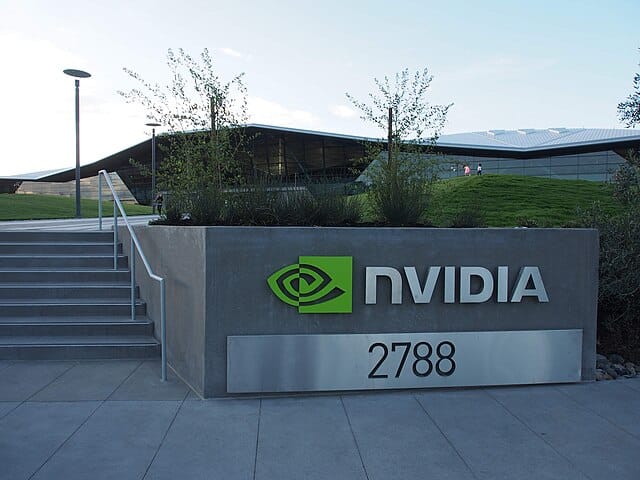Background
NVIDIA is a technology leader known for its graphics processing units (GPUs), which drive advancements in gaming, artificial intelligence (AI), data centers, and autonomous vehicles. The company was founded in 1993 by Jensen Huang (who is their current CEO), Chris Malachowsky, and Curtis Priem with a mission to transform PC gaming through better graphics. Over the years, Nvidia has expanded its scope, particularly with the introduction of the CUDA platform in 2006, which unlocked the potential of GPUs for AI, machine learning, and high-performance computing. Nvidia is headquartered in Santa Clara, California and continues to shape the future of technology.
Market Capitalization
NVIDIA’s market capitalization currently hovers around $3 trillion, making it one of the most valuable companies globally. This figure comes from multiplying its share price (approximately $120) by its outstanding shares (around 24.6 billion post its 10-for-1 stock split in June 2024). Over the past five years, NVIDIA’s market cap has gone from $100 billion in 2020 to $3 trillion, a 30x increase.
Competitor Analysis
NVIDIA faces competition from AMD, Intel, and indirectly TSMC, its key manufacturing partner. AMD’s MI300X AI chips and Intel’s Gaudi3 accelerators aim to chip away at NVIDIA’s 80%+ share of the AI GPU market. TSMC, while not a direct rival, holds leverage as NVIDIA’s foundry, impacting costs and supply. Emerging players like Google (TPUs) and custom-chip makers (Tesla, Amazon) also pose threats.
NVIDIA’s edge lies in its GPU dominance and software ecosystem. Its H100 and upcoming Blackwell chips lead in performance for AI training and inference, powering everything from ChatGPT to autonomous vehicles. The CUDA platform—a coding framework developers use—creates a sticky ecosystem, making it tough for customers to switch. NVIDIA’s first-mover advantage, paired with continuous innovation, keeps it ahead, though competitors continue to narrow the gap.
Profitability Analysis
For fiscal 2025 (ended January 2025), its gross margin is 74%, meaning it retains $74 of every $100 in revenue after production costs. Operating margin sits at 62%, reflecting efficiency after R&D and overhead, while net margin reaches 55%, or $55 profit per $100. These figures come from $130.5 billion in revenue and $72 billion in net income.
AMD’s gross margin hovers at 45-50%, Intel’s at 35-40%. NVIDIA’s premium pricing power comes from its near-monopoly in AI, where clients like Microsoft or Meta pay up for unmatched performance. Margins dipped slightly recently due to ramp-up costs for Blackwell chips, but they remain industry-leading. This profitability funds aggressive innovation.
Valuation Analysis
NVIDIA’s current price-to-earnings (P/E) ratio stands at approximately 40, meaning investors are paying $40 for every $1 of profit the company generates. Its price-to-sales (P/S) ratio is 22, translating to $22 per $1 of revenue. These figures are higher than semiconductor industry averages, where P/E typically falls between 25-30 and P/S ranges from 5-10. However, valuation metrics like these can be deceptive for a company experiencing rapid growth, and it’s critical to consider both sides: valuation and growth potential.
In 2023, NVIDIA’s P/E got all the way up to 243, a peak that has moderated as the company has started realizing the earnings that they were estimating. While that 243 P/E made NVIDIA appear extremely high priced, a deeper look at their guidance—and the projected increase in earnings (the “E” in P/E)—suggests it may have been one of the cheapest points in NVIDIA’s trajectory, given the explosive growth that followed. Looking ahead, the forward P/E, based on 2026 estimates, drops to 26. While not without risk, NVIDIA’s elevated multiples represent a bet on its leadership in a transformative industry.
Dividend Analysis
NVIDIA pays a dividend, but it’s negligible—$0.01 per share quarterly, or $0.04 annually, yielding just 0.02% at $120 per share. The payout ratio is under 2%, meaning it reinvests nearly all profits into R&D and expansion rather than rewarding shareholders with cash. This makes sense—NVIDIA’s a growth company, not a dividend play. Investors buy NVIDIA for capital gains, not income.
Balance Sheet Analysis
NVIDIA’s balance sheet is solid. With $43 billion in cash and equivalents and $10 billion in debt, its net cash position is $33 billion. Liquidity is strong—current assets far exceed current liabilities, meaning it can cover short-term obligations easily. Contrast that with debt-heavy firms like Intel, which carries more leverage. This financial health gives NVIDIA room to innovate or acquire.
Historical Revenue and Earnings Analysis
Revenue increased from $5 billion in 2015 to $130.5 billion in fiscal 2025 (ended January 2025), a 26x leap. Earnings skyrocketed from $600 million to over $72 billion, a 120x surge. The pivot to AI since 2020 ignited this, with growth rates soaring to 50-100% annually—2025’s 114% jump (from $61 billion to $130.5 billion) stands out, driven by $100 billion in Data Center sales. Pre-2020, gaming fueled steady 10-20% gains, peaking at $11 billion in 2021 before AI took over.
Growth Catalysts
NVIDIA’s Blackwell GPUs, launched in 2024, significantly enhance AI performance, showing promise for substantial growth in Data Center revenue in the coming years. The autonomous driving segment, powered by the Drive platform in collaboration with Tesla and other partners, is poised to tap into a massive market opportunity. In healthcare, the Clara platform is driving AI innovations in drug discovery and imaging. Meanwhile, emerging fields like robotics and edge computing offer additional avenues for meaningful revenue contributions.
Risks and Challenges
NVIDIA faces several risks that could jeopardize its impressive trajectory.
- Slowdown in the Economy: An economic downturn could significantly impact NVIDIA’s momentum. A recession might lead AI-focused companies like Meta or cash-strapped startups to slash tech spending, threatening NVIDIA’s projected growth. With cloud computing driving substantial revenue a broader pullback in investment could hit hard, especially if the AI hype cools and growth dips to.
- Global Trade War Tensions: Geopolitical friction, particularly U.S.-China trade restrictions, poses a major challenge. China once represented 20-25% of NVIDIA’s sales ($26 billion in 2023), but export bans on advanced chips like the H100 have shrunk that share to below 10%. Escalating trade conflicts could further erode this market.
- Supply Constraints: Supply chain disruptions, such as TSMC manufacturing delays or semiconductor shortages could stall rollouts like the Blackwell GPU. These setbacks could cost billions in lost revenue and allow competitors to gain ground.
- Long-Term Sustainable Growth Concerns: Questions linger about NVIDIA’s ability to maintain its growth long term. Rivals like AMD, with the cost-effective MI300X, are gaining traction in price-sensitive markets. If these competitive and structural challenges continue, sustaining long-term high growth could be hard to manage.
Conclusion
NVIDIA’s financial strength, AI dominance, and growth potential are undeniable. Its $3 trillion valuation, high margins, and $32 billion net cash pile showcase a company firing on all cylinders. But there are risks ahead—tough competition, trade problems, and a high valuation could make things tricky.
Disclosure: This material is intended for informational and educational purposes only. It should not be considered a recommendation to buy or sell any specific security, including NVIDIA (NVDA), nor should it be interpreted as personalized investment advice. The analysis provided reflects the views of Brooks Wealth Management at the time of publication and is subject to change without notice. NVDA is a stock that is in Brooks Wealth Management portfolios, but this post does not imply that it will remain a holding in the future or that it is suitable for all investors. Please consult with a qualified fiduciary financial advisor to determine what investments are appropriate for your individual circumstances.

